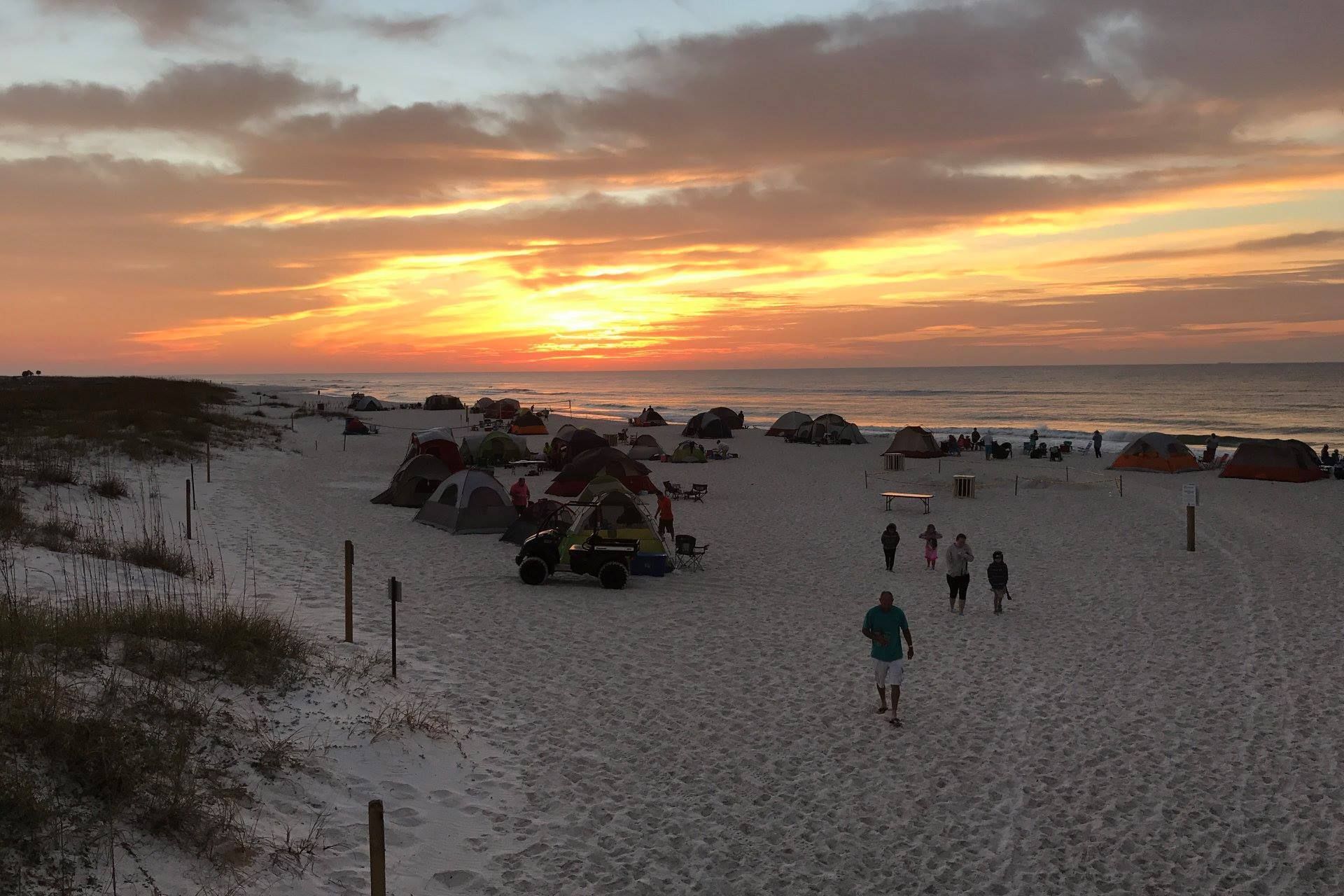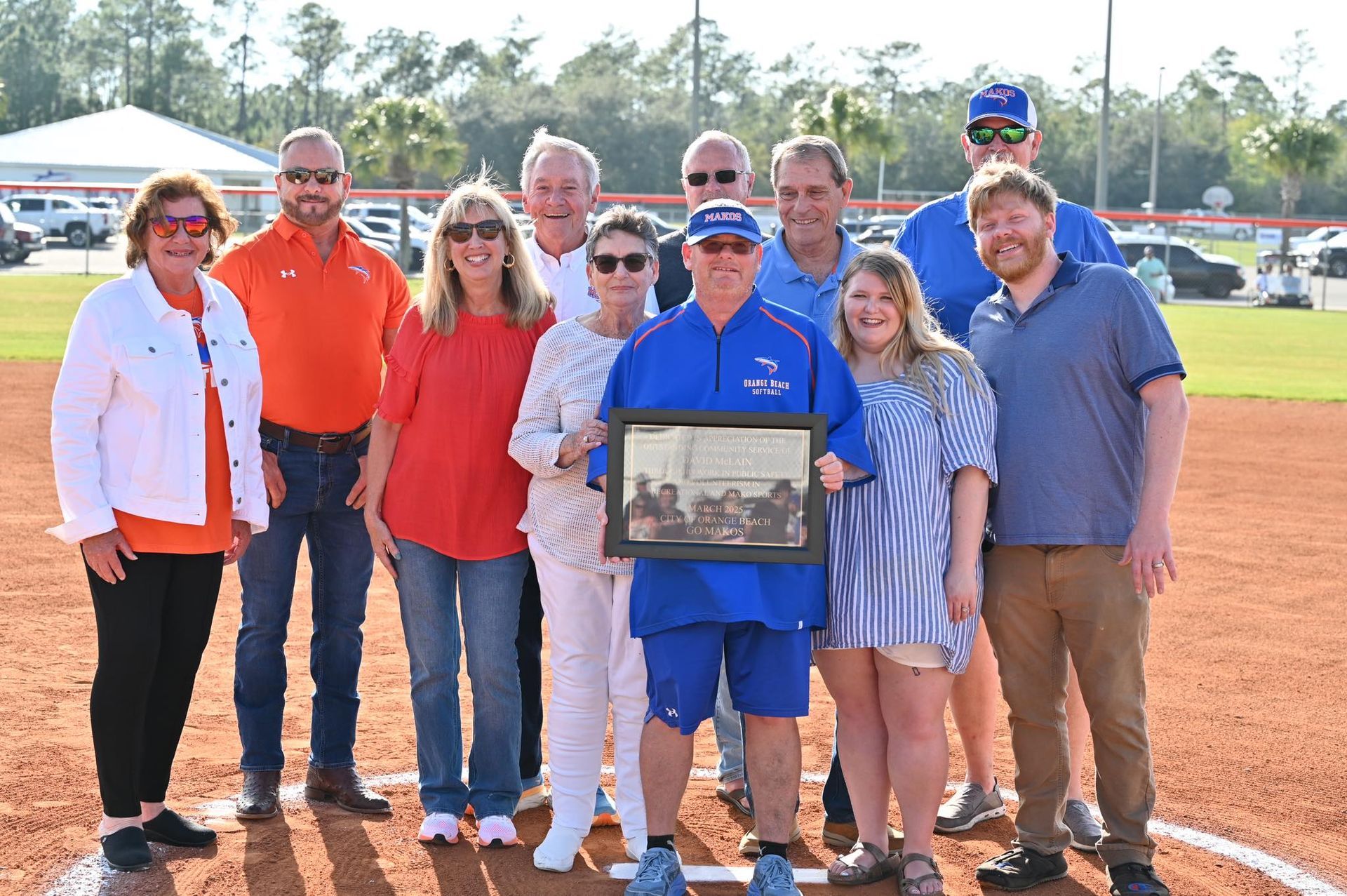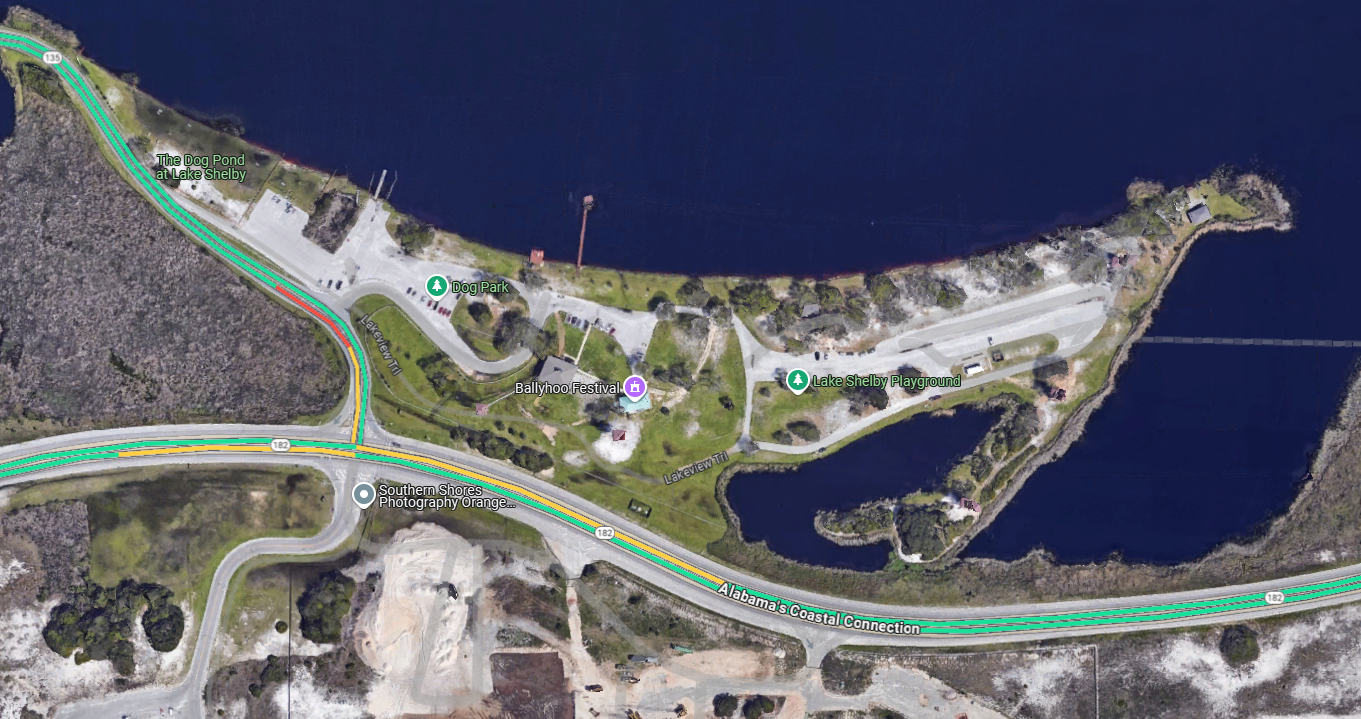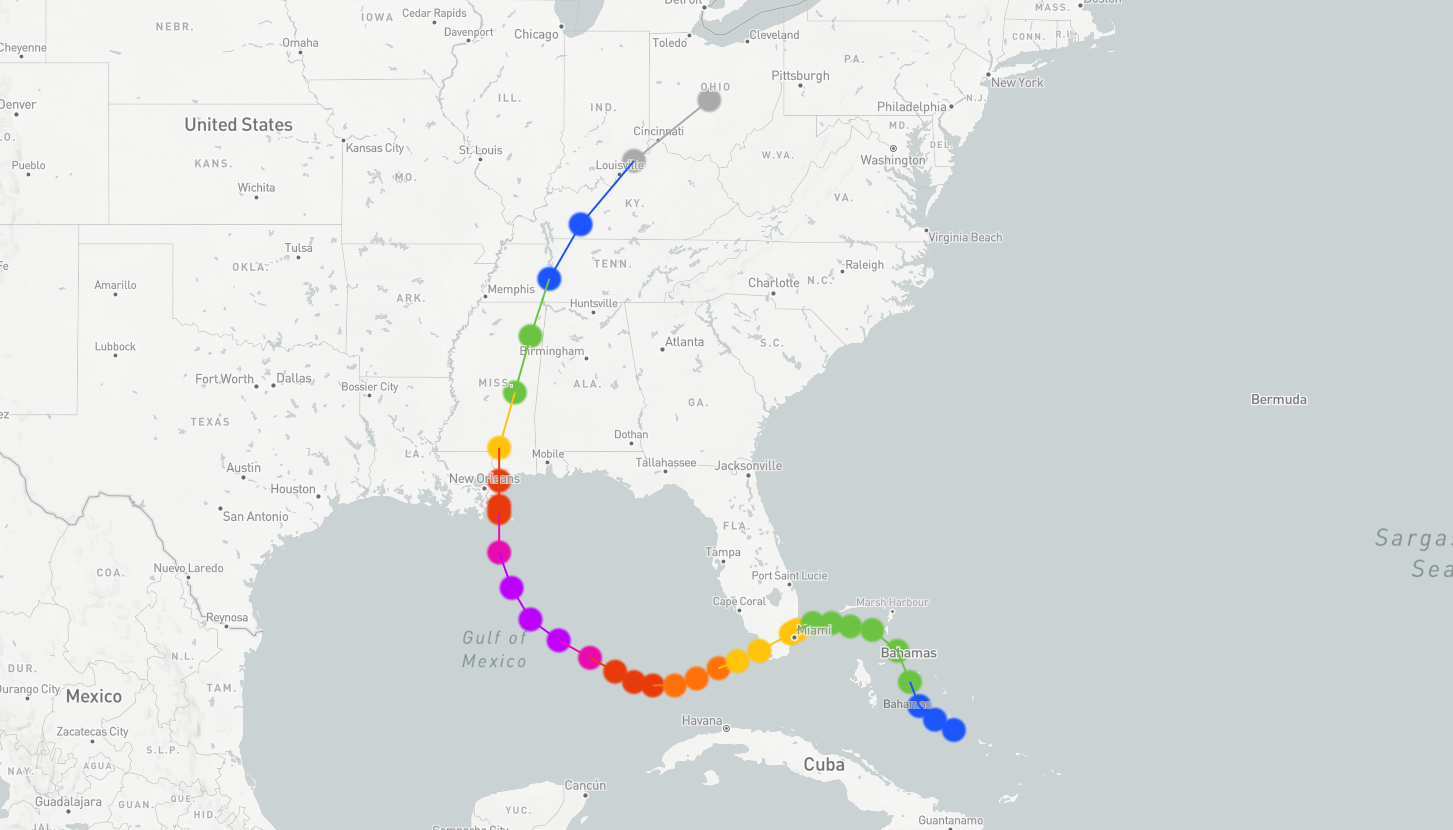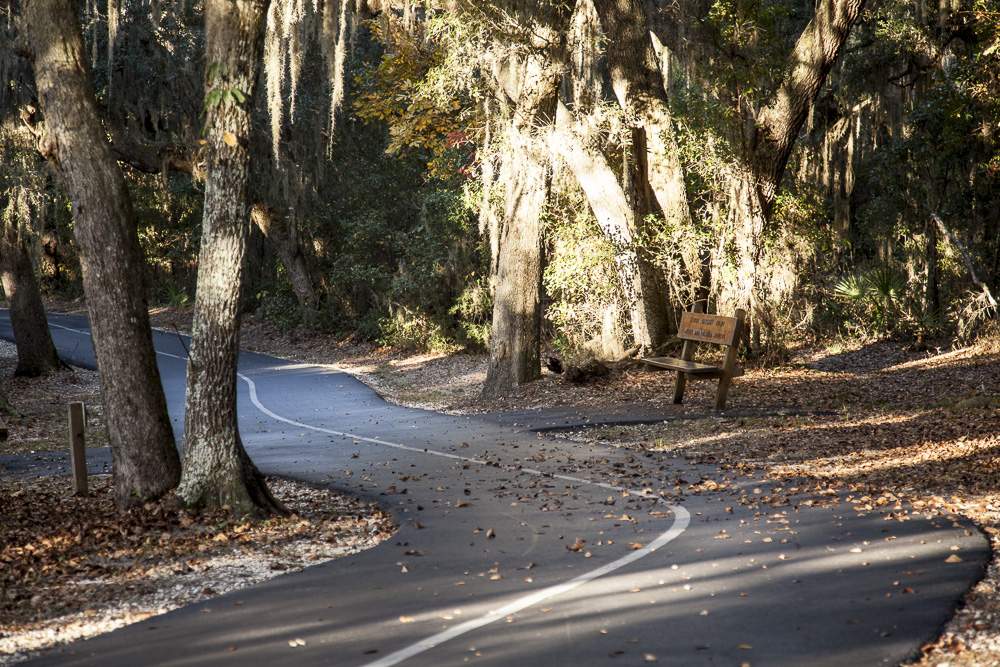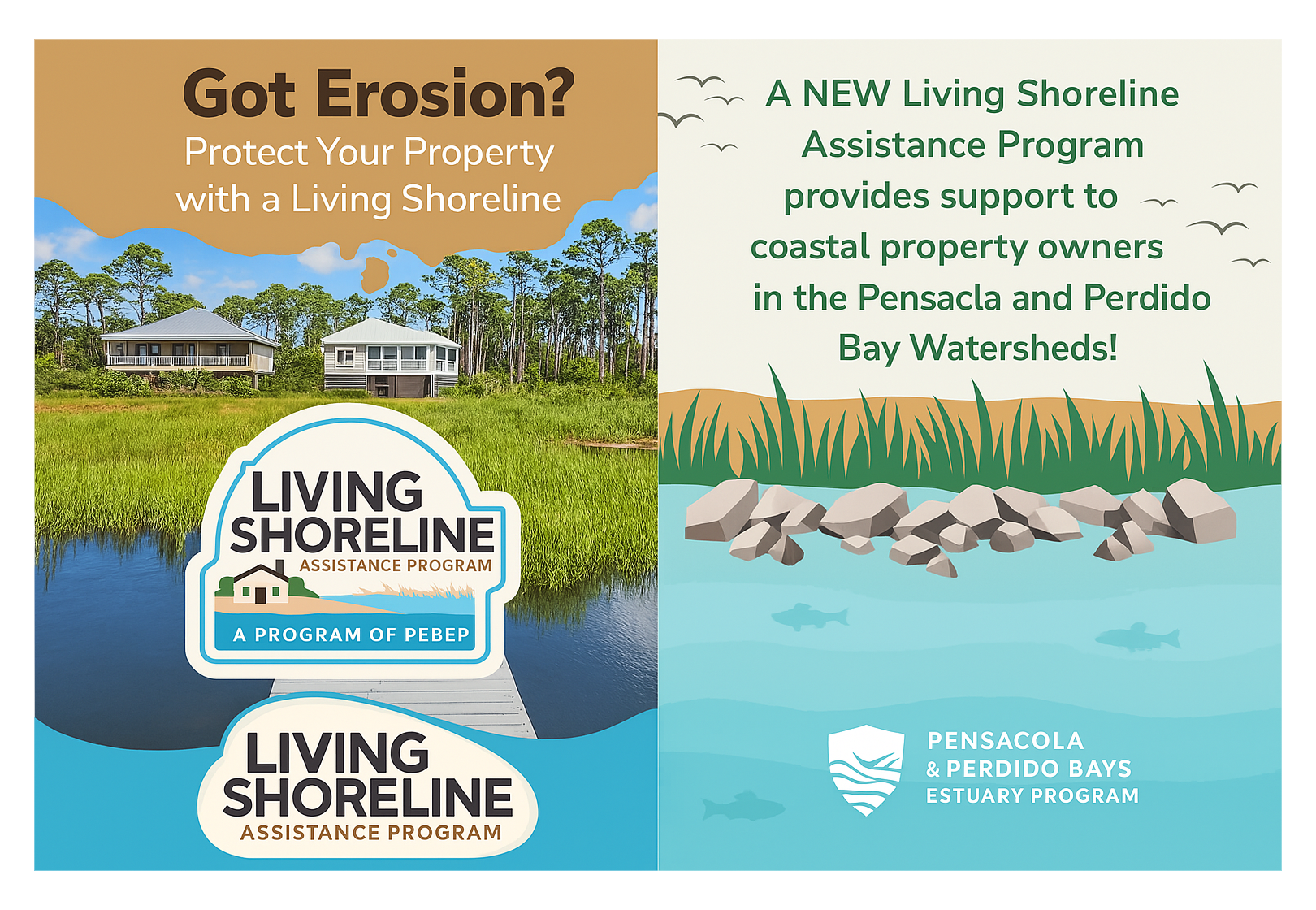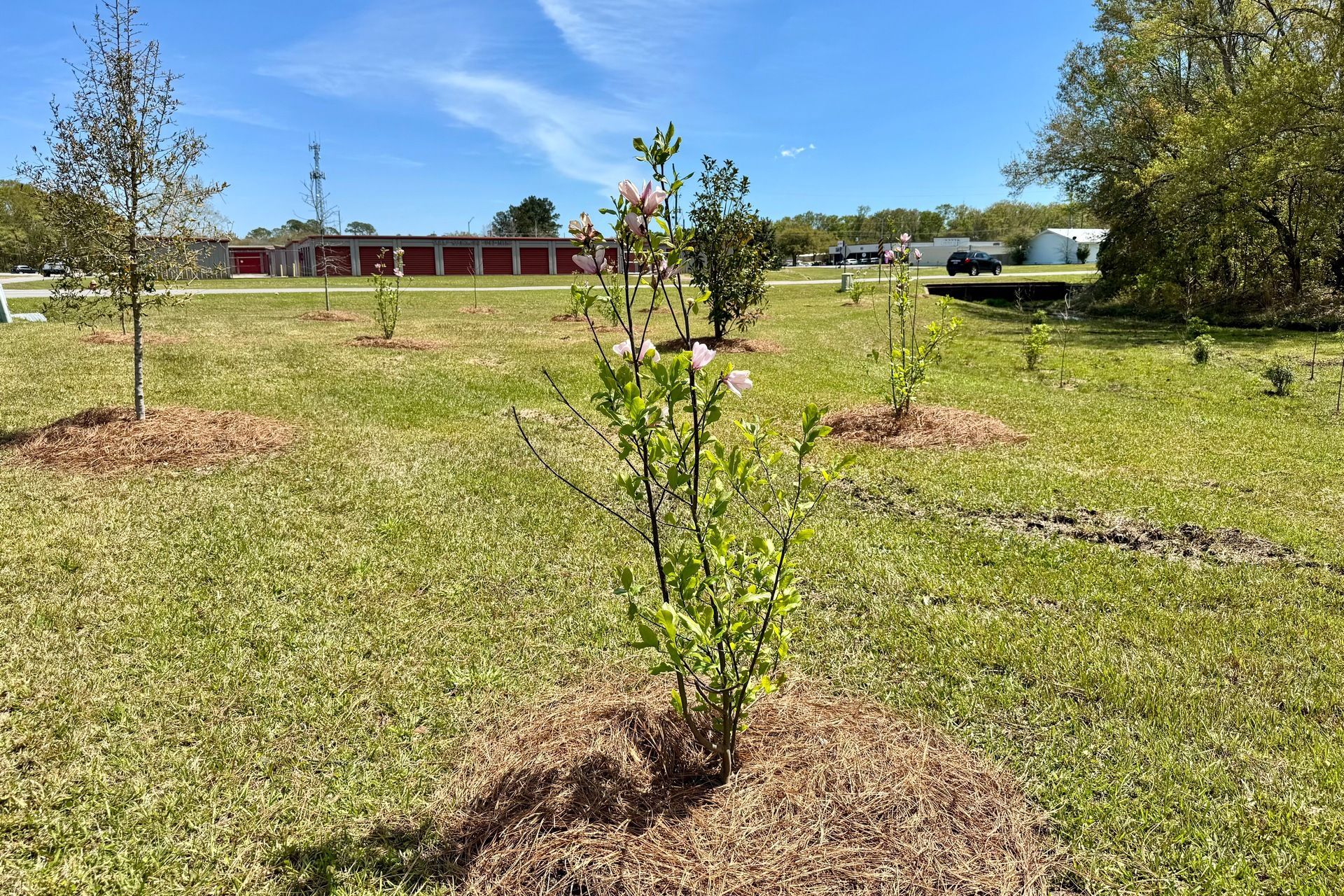Historic Hurricanes and Tropical Storms that Impacted Baldwin County
We’ve been through hurricanes in the past, and we’ll persevere through more in the years to come.
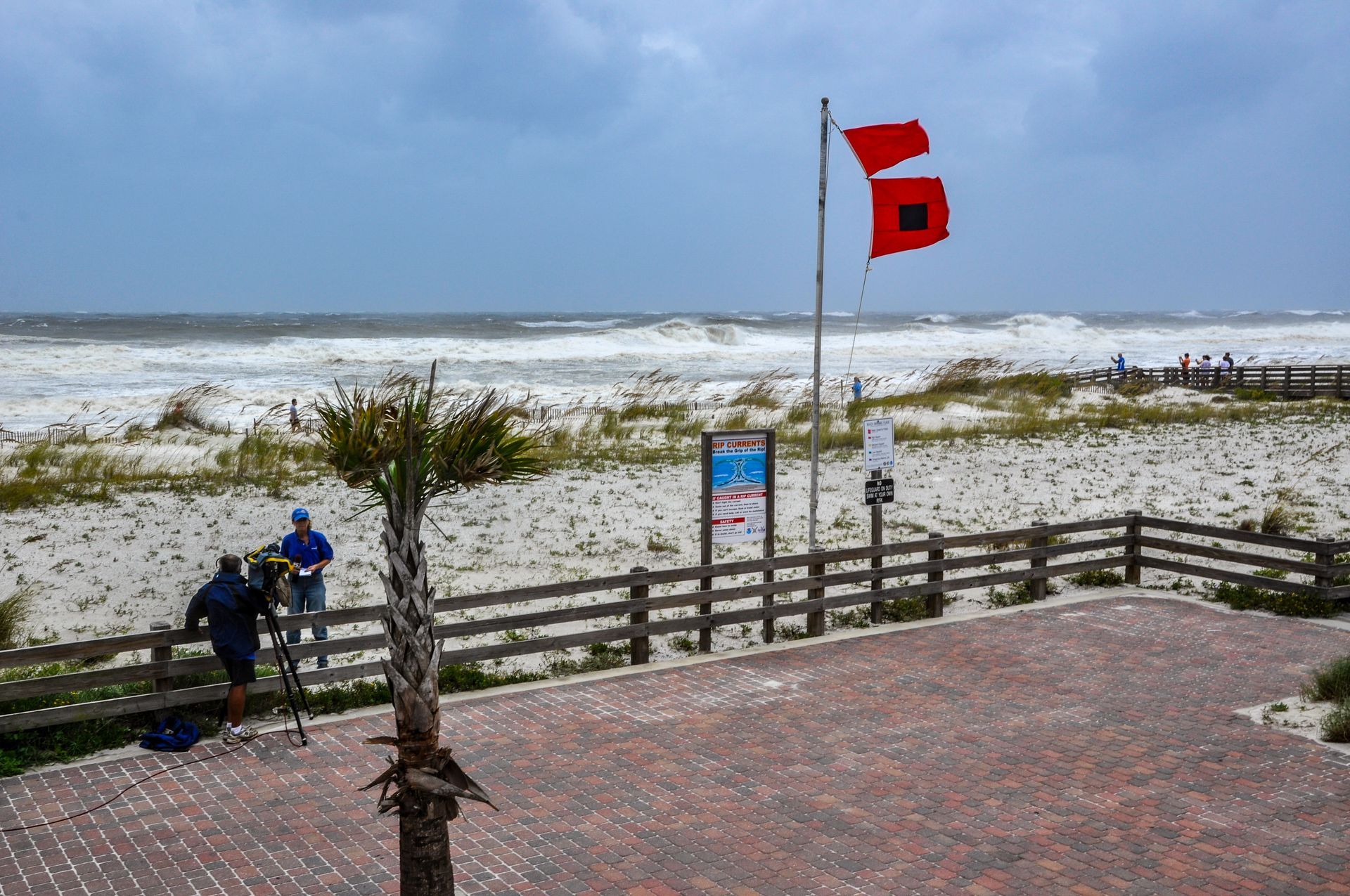
Orange Beach, Ala. – (OBA) – We have reached the peak of the 2024 hurricane season and there is currently a category 1 hurricane in the Gulf of Mexico forecast to make landfall in Louisiana this afternoon.
While Hurricane Francine isn’t predicted to cause any serious damage in our area, we expect to see high surf, rip currents, and potentially heavy rain.
Baldwin County has experienced the power and destruction of hurricanes and tropical storms throughout its history. From the devastating winds of Hurricane Frederic in 1979 to the relentless rainfall and slow movement of Hurricane Sally in 2020, the county has faced the full spectrum of natural disasters associated with Gulf Coast storms. Each storm has left its mark, reshaping the landscape and testing the resilience of our community.
Hurricanes such as Camille, Ivan, and Katrina brought intense wind and storm surges, while slower-moving systems like Danny and Sally caused catastrophic flooding. In some cases, such as Hurricane Opal and Tropical Storm Gordon, Baldwin County narrowly escaped the worst but still faced damage to coastal properties and infrastructure. This summary below provides an overview of 11 hurricanes and/or tropical storms that have impacted Baldwin County over the decades since 1969.
We could start with the Cat 3 that hit Fort Morgan on July 5th, 1916, when the pressure measured 28.38 inches (961 Mb) and landfall was made just west of Mobile. But that was before hurricanes had names, so let's take a look at the more recent ones, beginning with Hurricane Camille in 1969.
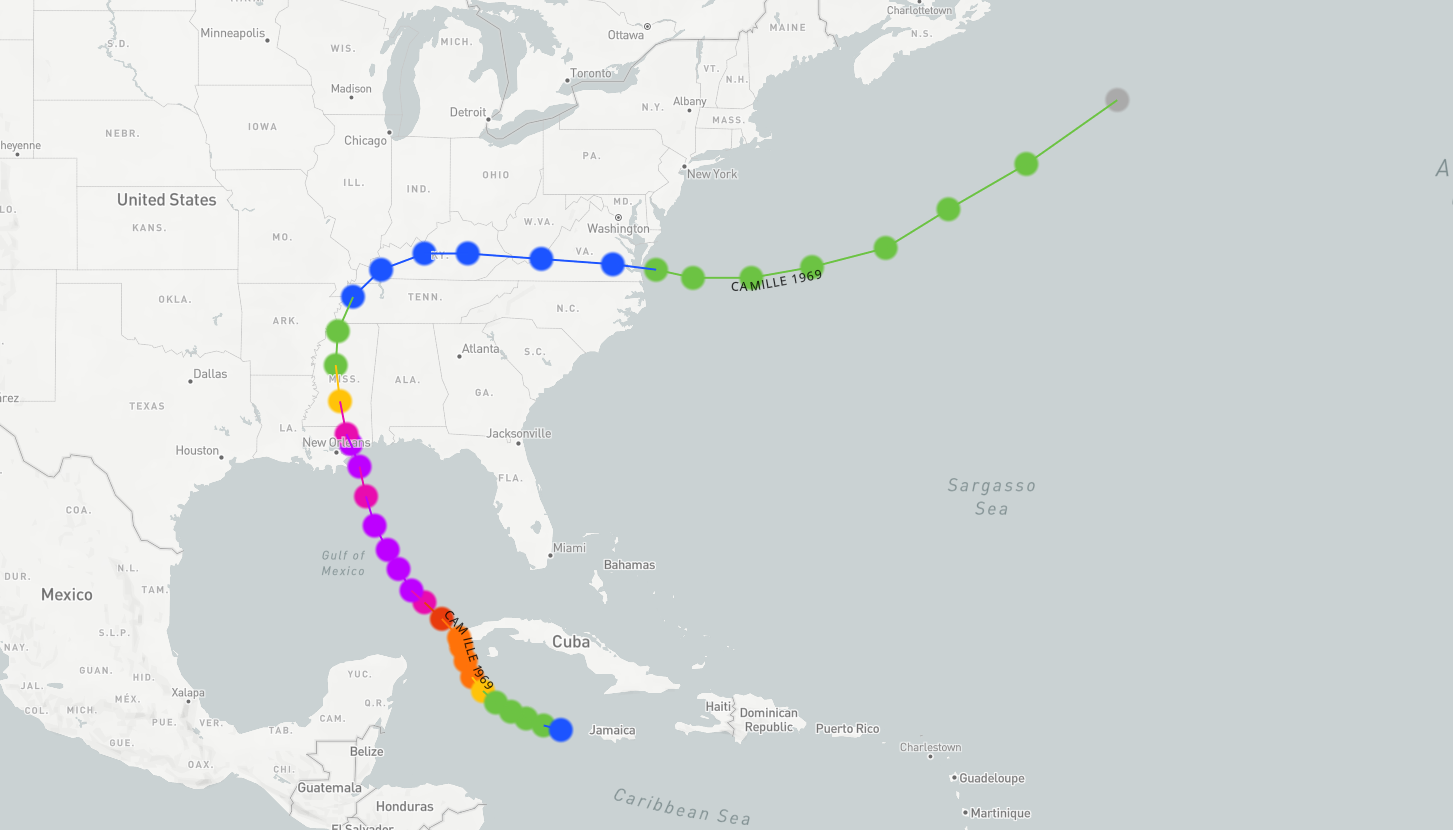
Hurricane Camille: August 17th, 1969
Hurricane Camille struck the Mississippi Gulf Coast in August 1969 as one of the most intense hurricanes to ever hit the United States. Although Baldwin County did not experience the brunt of Camille's force, it still felt significant impacts from the storm. The county experienced heavy rainfall, leading to localized flooding, and high winds caused damage to structures and downed trees and power lines. Coastal areas in Baldwin County saw storm surges that led to beach erosion and damage to coastal properties.
- Date: August 17-18, 1969
- Category at Landfall: Category 5
- Top Wind Speeds: Up to 190 mph (landfall in Mississippi)
- Rainfall: Baldwin County experienced heavy rain, though specific measurements for the county are limited; areas nearby reported up to 10 inches.
- Storm Surge: Approximately 10 feet in Baldwin County.
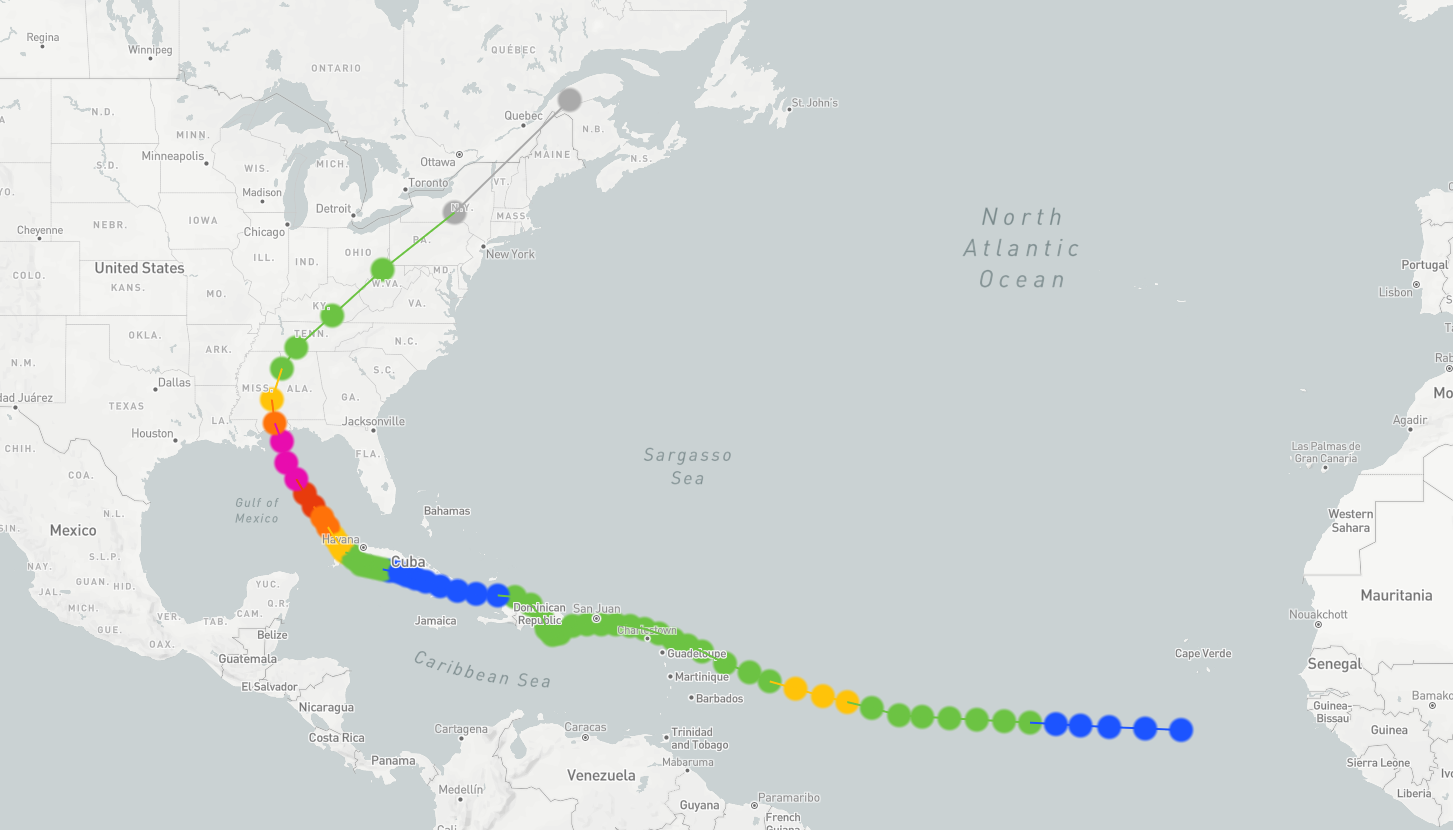
Hurricane Frederic: September 12th, 1979
Hurricane Frederic made landfall near Dauphin Island, Alabama, in September 1979 as a Category 4 hurricane, significantly affecting Baldwin County. The storm brought sustained winds of up to 130 mph, causing widespread structural damage, including the destruction of homes, businesses, infrastructure and the huge sand dunes. The storm surge caused extensive flooding along the coastline, particularly affecting Gulf Shores and other coastal communities. Extensive structural damage to homes and businesses, widespread power outages lasting several weeks, and significant beach erosion were experienced. Frederic caused considerable economic damage, estimated at over $2.3 billion (1979 USD), with long-term recovery efforts required.
- Date: September 12-13, 1979
- Category at Landfall: Category 4
- Top Wind Speeds: 130 mph
- Rainfall: Up to 10 inches
- Storm Surge: 8–12 feet in coastal Baldwin County, particularly affecting Gulf Shores.
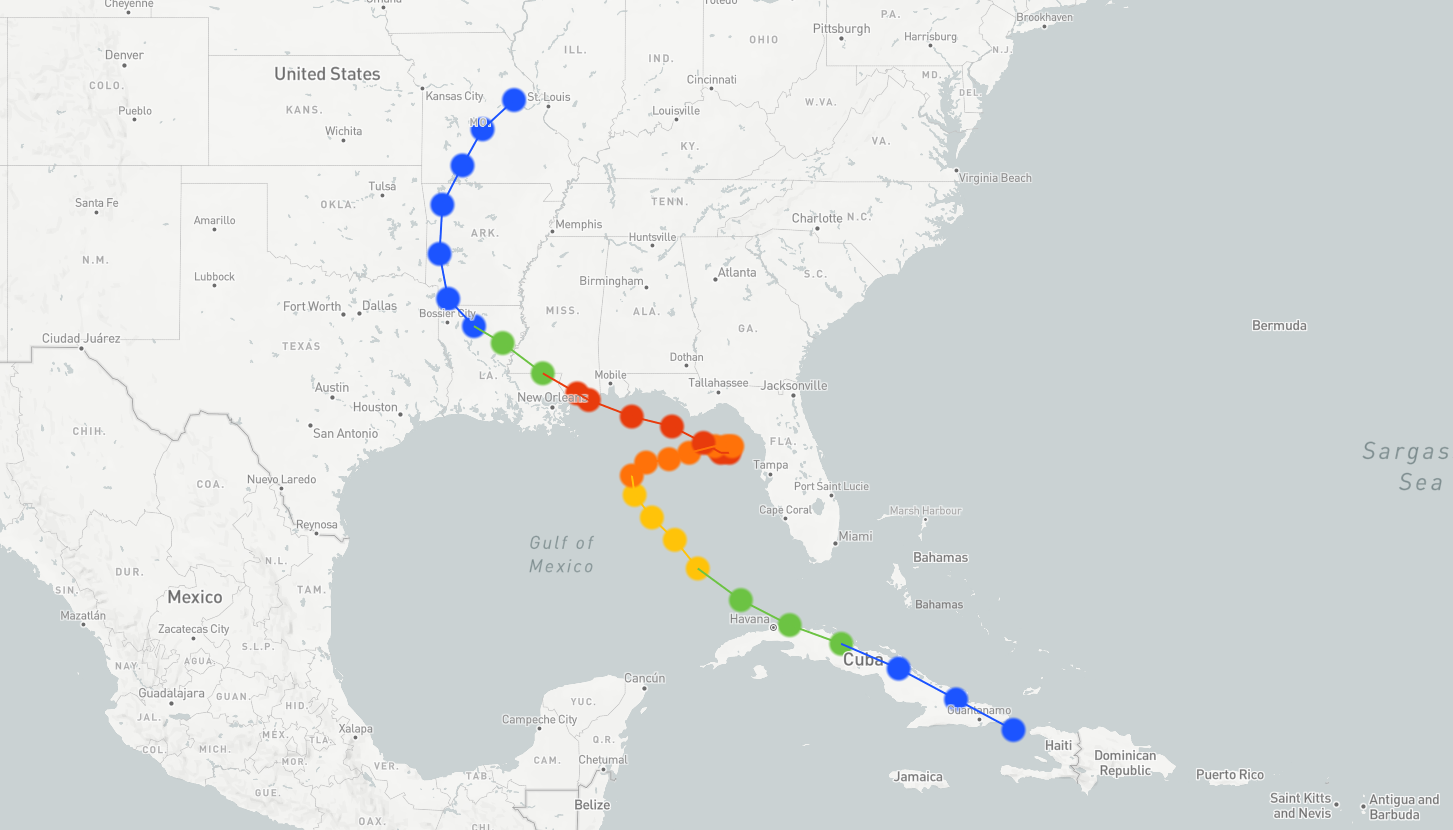
Hurricane Elena: September 2nd, 1985
Hurricane Elena in September 1985 brought a complex situation to Baldwin County. Initially fluctuating in its path, Elena ultimately made landfall near Biloxi, Mississippi, but its extensive wind field affected Baldwin County. The county experienced strong winds, leading to downed trees and power lines, and moderate storm surge impacted coastal areas. There was significant beach erosion and some structural damage, but Baldwin County was spared the worst.
- Date: September 1-2, 1985
- Category at Landfall: Category 3 (near Biloxi, Mississippi)
- Top Wind Speeds: 115 mph
- Rainfall: 5–10 inches
- Storm Surge: 6–10 feet along the coast
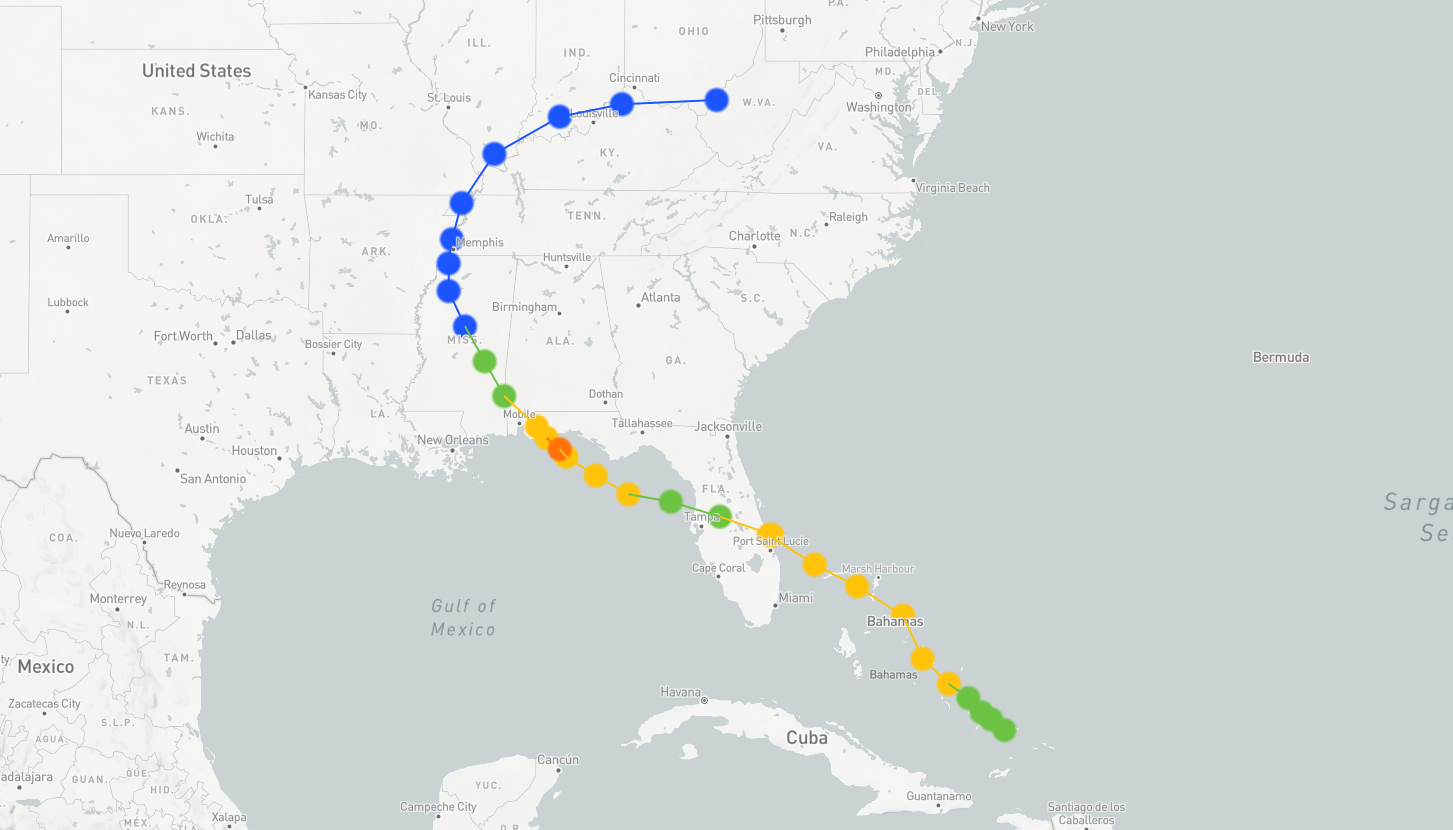
Hurricane Erin: August 3rd, 1995
Hurricane Erin made landfall twice in Florida before crossing the Gulf of Mexico and striking the Alabama coast near Pensacola in August 1995 as a Category 2 hurricane. Baldwin County faced considerable impacts from Erin, including heavy rainfall, strong winds, and coastal flooding. The storm surge led to beach erosion and damage to coastal properties, particularly in Gulf Shores and Orange Beach. Power outages and downed trees were common, and the county dealt with significant cleanup and recovery operations in the aftermath.
- Date: August 2-3, 1995
- Category at Landfall: Category 2
- Top Wind Speeds: 100 mph
- Rainfall: 6–8 inches
- Storm Surge: 4–6 feet
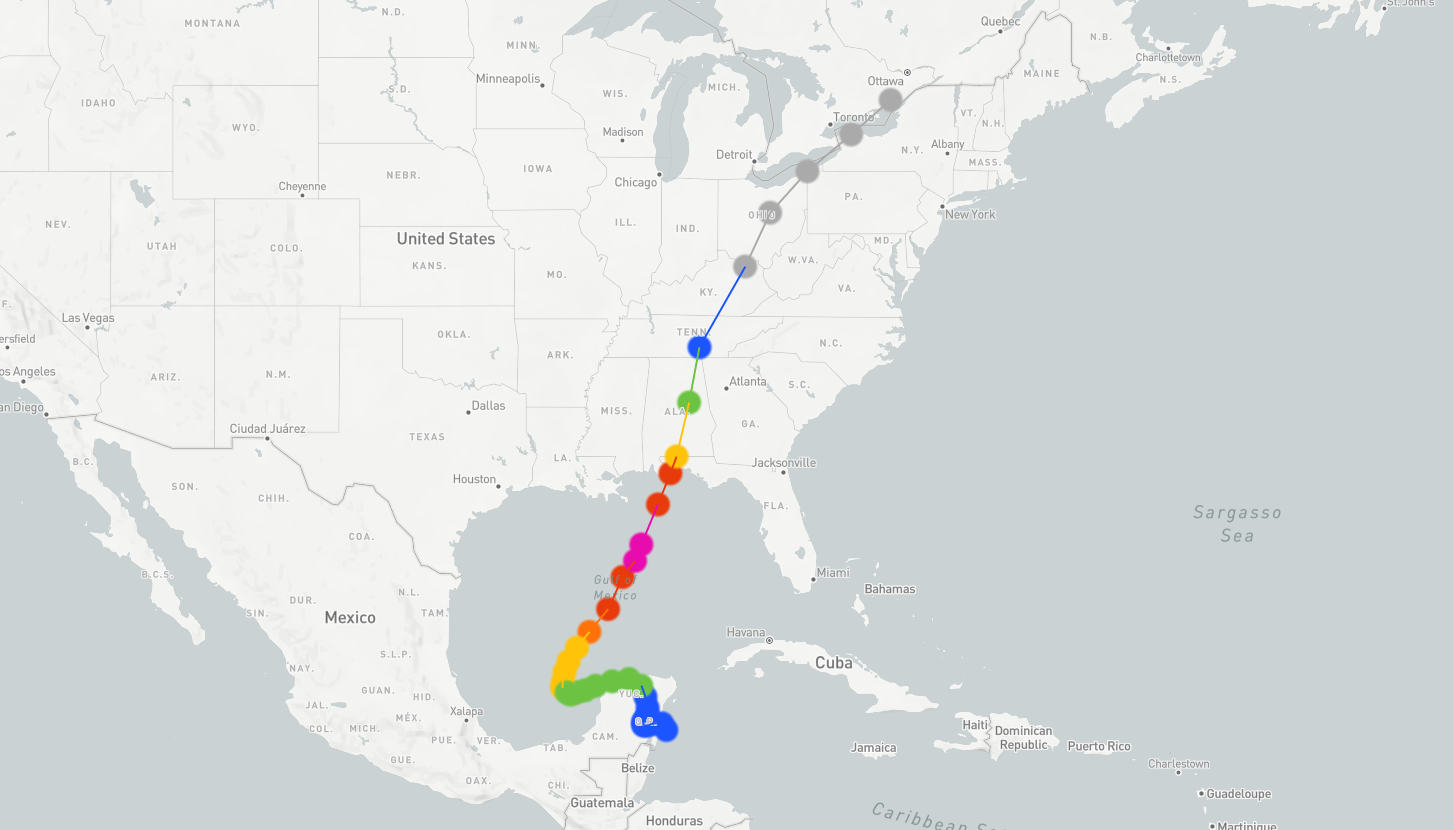
Hurricane Opal: October 4th, 1995
Residents along the northern Gulf Coast woke up to alarming news on the morning of October 4, 1995. The night before, Hurricane Opal was a Category 2 storm with maximum winds of 100 mph. By 4 a.m., the storm had intensified, with winds reaching 135 mph, and by 10 a.m., Opal’s winds surged to 150 mph, just shy of Category 5 strength. This rapid escalation led to a last-minute rush of evacuations, causing gridlock on major highways like Interstate 65. Many evacuees sought refuge in local shelters as Opal approached the western Florida Panhandle.
.
According to the National Hurricane Center, Opal’s legacy will always be the devastating storm surge that occurred across the coastal areas of the western Florida Panhandle. Storm surge of 10–15 feet was recorded from Navarre Beach east to Destin with 6–8 feet observed in the inland bays from Pensacola to Choctawhatchee Bay. Opal destroyed most of the homes that were facing the Gulf of Mexico from Navarre Beach to east of Destin. In total, nearly 300 homes were destroyed with another 1,000 homes suffering major damage. Almost 1,000 boats were damaged and it was estimated that $50 million in damage was done to recreational boats. Tremendous damage occurred to the infrastructure, with water and sewer systems damaged, roads buckled, eroded, or covered in sand, and phone and electric utilities damaged. The surge destroyed Highway 399 that runs from Pensacola Beach to Navarre. U.S. Highway 98 between Fort Walton Beach and Destin was also destroyed.
To the west of Opal’s center, storm surge ranged from 4 to 7 feet from Orange Beach to Dauphin Island. This resulted in some damage to structures along the immediate coast, along with the erosion of numerous sand dunes.
- Date: October 4, 1995
- Category at Landfall: Category 3
- Top Wind Speeds: 115 mph
- Rainfall: 15.45 inches (near Pensacola)
- Storm Surge: 12–15 feet (4–7 feet from Orange Beach to Dauphin Island)
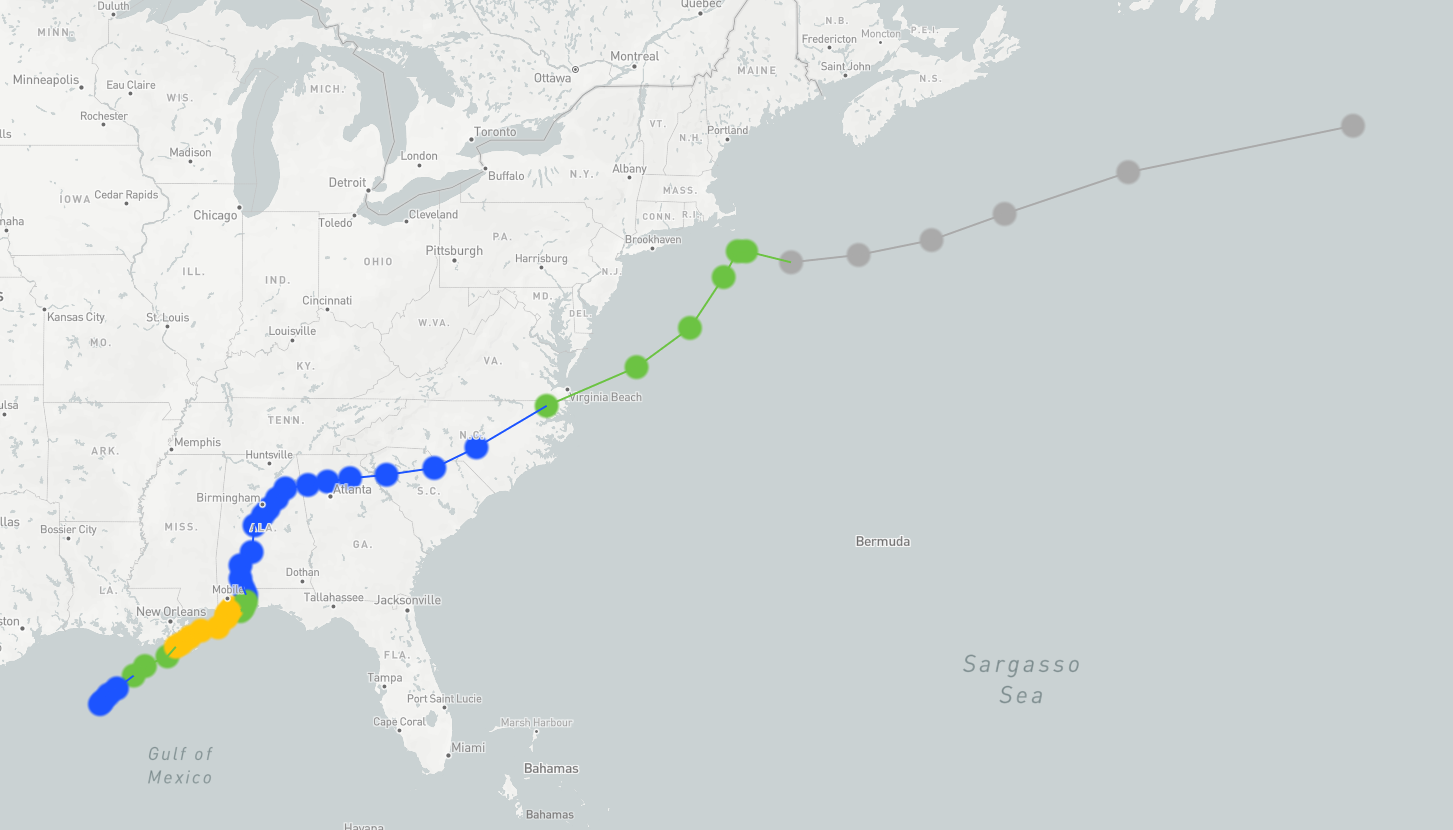
Hurricane Danny: July 19th, 1997
Though technically only a Cat 1, Danny’s slow-moving nature brought unprecedented rainfall to our area. It registered wind gusts of 80 mph at landfall as it crossed Mullet Point south of Point Clear, then stalled over Mobile Bay and brought record flooding to south Alabama. Rain totals at the Dauphin Island Sea Lab reached 36.71 inches with 25.98 inches of that in seven hours. For days, the storm lingered. Bay Minette was particularly hard hit, with residents forced to evacuate as floodwaters overtook their homes.
The widespread flooding inundating roads, homes, and even destroying a significant portion of Alabama's public oyster reefs. Tornadoes spawned by the storm added to the destruction, particularly along the east of the storm. While the total damage cost $100 million (adjusted for inflation: $190 million in 2024), Danny's impact was most keenly felt in the lives disrupted and the long-term recovery efforts.
- Date: July 19, 1997
- Category at Landfall: Category 1
- Top Wind Speeds: 80 mph
- Rainfall: 37 inches
- Storm Surge: 6.5 feet

Hurricane Georges: September 28th, 1998
Hurricane Georges struck the Gulf Coast in September 1998, making landfall near Biloxi, Mississippi, as a Category 2 hurricane. Baldwin County experienced prolonged heavy rainfall, causing widespread flooding in both coastal and inland areas. High winds resulted in downed trees, power lines, and structural damage to buildings. The storm surge affected coastal communities, leading to beach erosion and property damage. The flooding and wind damage required extensive recovery efforts, with many residents and businesses impacted by the storm.
- Date: September 28-29, 1998
- Category at Landfall: Category 2
- Top Wind Speeds: 110 mph
- Rainfall: 10–20 inches, with some areas experiencing even higher totals
- Storm Surge: 8–10 feet
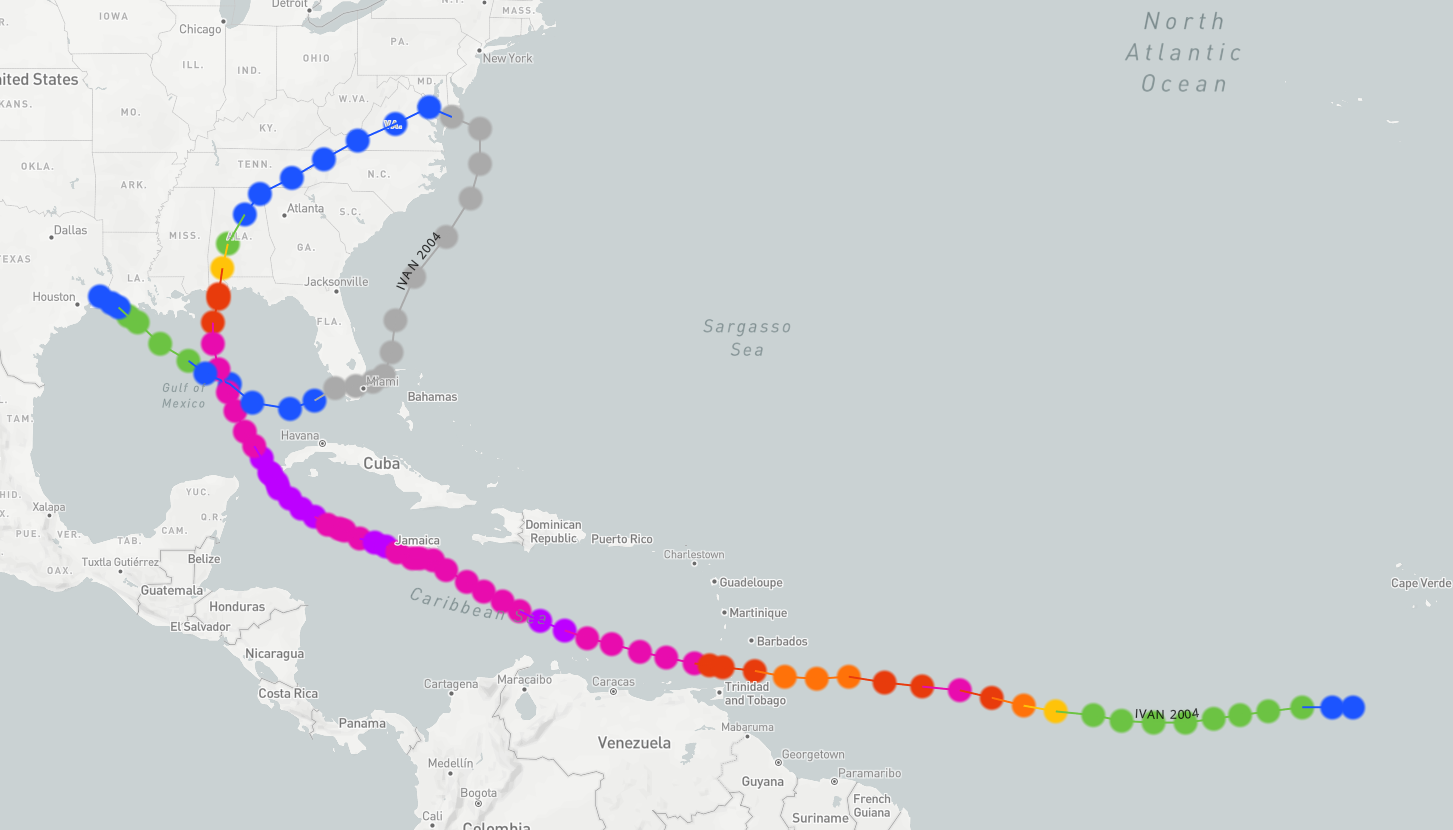
Hurricane Ivan: September 16th, 2004
Hurricane Ivan had winds around 130 mph at landfall in the United States as it moved inland near Gulf Shores. At the time, Ivan was the worst storm to strike the central Gulf Coast in 25 years. It made landfall around 1am along the Fort Morgan Peninsula. The eye traveled northward through Baldwin County, then along the Alabama River into central Alabama. The destruction was unprecedented. Homes were flattened, businesses were destroyed, and the landscape was forever changed. And while the worst damage was along the coastline of Baldwin County, it was extensive all the way north into communities such as Atmore and others as far as 100 miles inland.
Hurricane Ivan left a trail of destruction across the Caribbean and the United States. Islands like Grenada suffered catastrophic damage, with homes destroyed and vital infrastructure crippled. In the US, the storm surge and powerful winds caused widespread devastation along the Gulf Coast, particularly in Alabama and Florida. Millions were left without power, and the economic impact was immense. While Ivan wasn't the strongest hurricane to hit the region, it remains one of the costliest.
This
video offers a look back at Ivan's impact on our area.
- Date: September 16, 2004
- Category at Landfall: Category 3
- Top Wind Speeds: 120 mph
- Rainfall: 4–10 inches
- Storm Surge: 10–13 feet
Hurricane Katrina: August 29th, 2005
Registered as one of the costliest and deadliest storms in the US, Katrina is most associated with destruction in Louisiana and Mississippi, but Baldwin County still felt the effects of this colossal storm. Many homes were engulfed by Katrina's surge in Bayou La Batre, while major beach erosion affected areas all the way from Dauphin Island to east of Destin. The west end of Dauphin Island was completely underwater with most of the homes washed away. At the time of landfall, hurricane force winds extended up to 125 miles east, stretching well into Baldwin County and into the Florida panhandle, causing widespread damage along the Gulf Coast.
Hurricane Katrina made landfall as a Category 3 storm. It first made landfall near Buras-Triumph, Louisiana, with sustained winds of 125 mph (201 km/h) and a central pressure of 920 mbar (27 inHg) on August 29, 2005. It then made a second landfall near the Louisiana-Mississippi border with sustained winds of 120 mph (190 km/h).
- Date: August 29, 2005
- Category at Landfall: Category 3
- Top Wind Speeds: 125 mph
- Rainfall: 8–12 Inches
- Storm Surge: The highest recorded surge was in Mississippi, with areas like Bay St. Louis and Pass Christian experiencing a surge of up to 28 feet (8.5 meters) above normal tide levels.
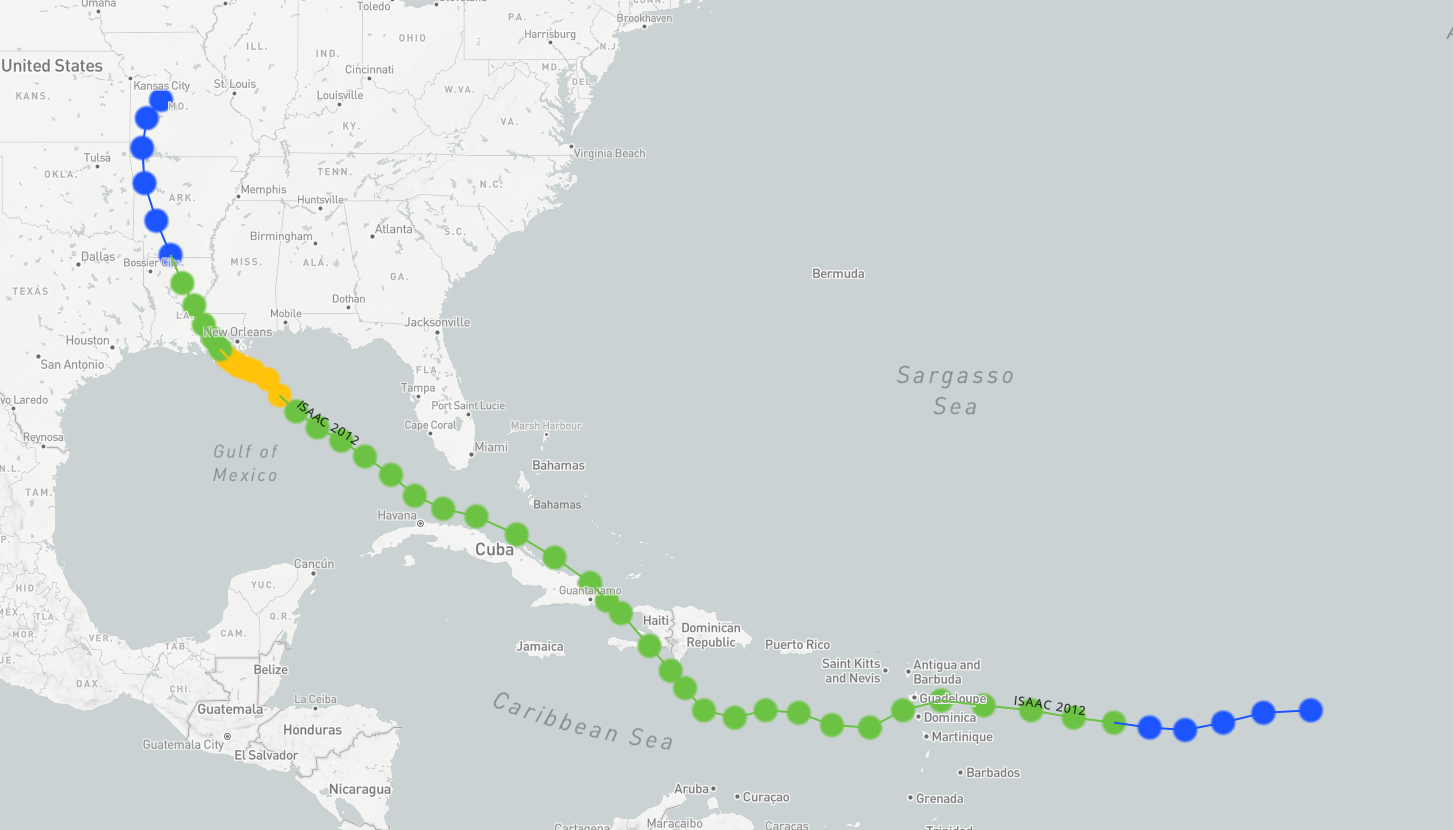
Hurricane Isaac: August 28 & 29, 2012
Hurricane Isaac brought significant impacts on the Alabama Gulf Coast as it made landfall in Louisiana in late August. The storm's slow movement led to prolonged periods of heavy rainfall, resulting in widespread flash flooding, especially in southwest Alabama. Rainfall totals reached up to 20 inches in some areas, causing road washouts and flooding in buildings. The strongest winds in Alabama were recorded on Dauphin Island, reaching 60 mph, while other coastal areas experienced gusts between 40-50 mph. Coastal flooding and minor to moderate beach erosion occurred due to storm surges, with storm tides reaching 4–6 feet in Mobile Bay and up to 4 feet in parts of the Florida Panhandle, inundating roads and waterfront properties. Despite these challenges, no injuries were reported in Alabama related to the storm.
- Date: August 29, 2012
- Category at Landfall: Category 1
- Top Wind Speeds: 80 mph
- Rainfall: 10–20 Inches
- Storm Surge: 4–6 Feet
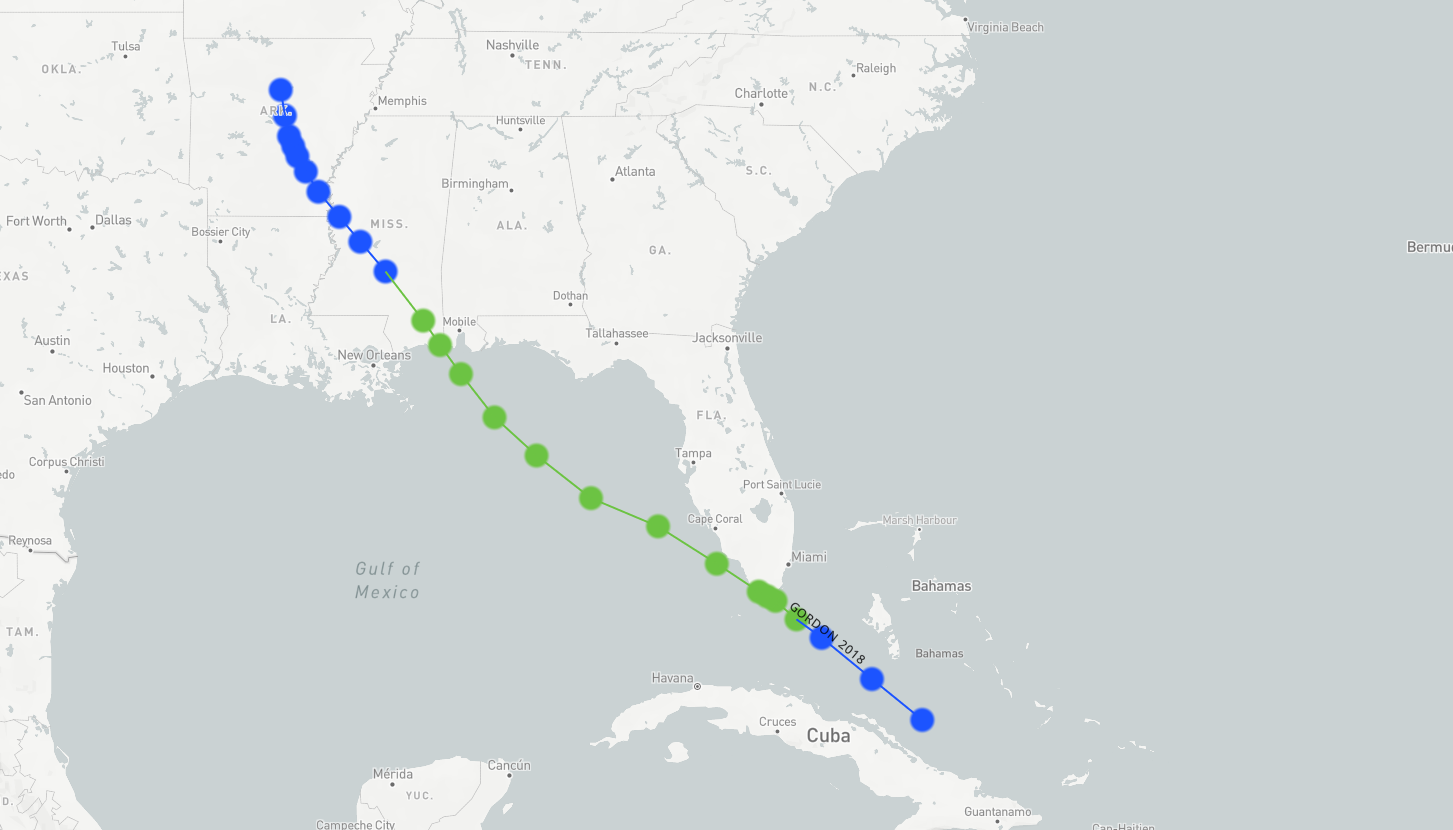
Tropical Storm Gordon: September 4, 2018
Tropical Storm Gordon made landfall near Pascagoula, Mississippi, in September 2018, just west of the Alabama-Mississippi border. The storm brought strong winds and heavy rainfall to the northern Gulf Coast, affecting areas from Florida to Louisiana. Coastal Alabama, including Gulf Shores and Orange Beach, experienced significant rain and winds from the storm, but Gordon was just shy of hurricane strength. Flooding, power outages, and downed trees were widespread. One fatality was reported in Florida due to a tree falling on a mobile home. Emergency shelters were opened, and some evacuations were ordered for low-lying areas.
- Date: September 4, 2018
- Category at Landfall: Tropical Storm
- Top Wind Speeds: 70 mph
- Rainfall: 4–8 inches in parts of Alabama, Mississippi, and Florida Panhandle
- Storm Surge: 2–4 feet
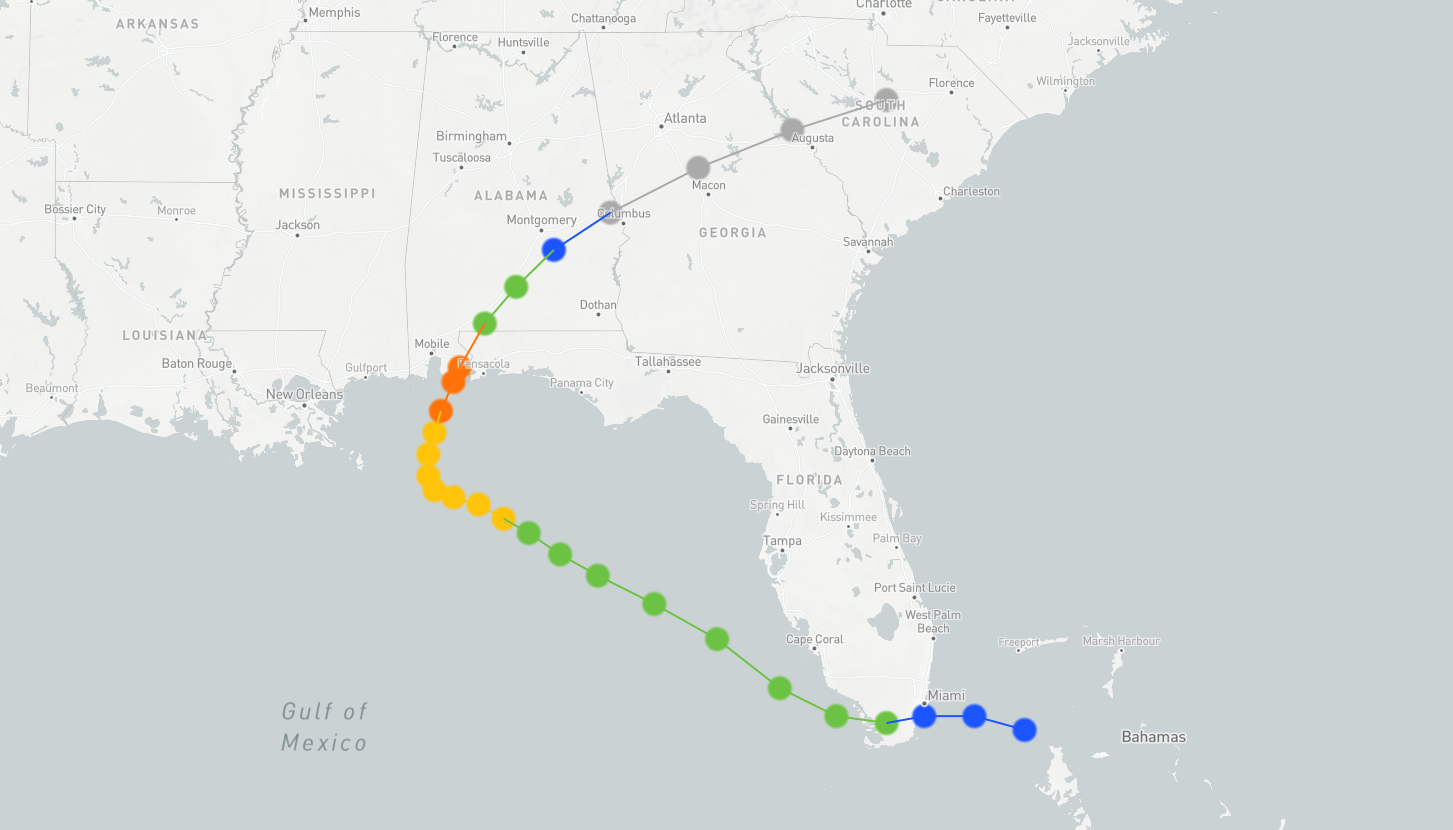
Hurricane Sally: September 16th, 2020
Hurricane Sally made landfall in the Gulf State Park in September 2020 as a Category 2 hurricane, bringing significant destruction to Baldwin County. The eye wall moved directly over Orange Beach City Hall. Sally’s slow movement resulted in prolonged heavy rainfall, leading to catastrophic flooding in many areas. Coastal areas experienced severe storm surge and beach erosion, particularly affecting Gulf Shores, Orange Beach and Perdido Key. The slow movement combined with high winds caused widespread damage to homes, businesses, and infrastructure, and power outages were extensive. The recovery process was lengthy, with substantial federal and state assistance required to aid in rebuilding efforts.
- Date: September 16, 2020
- Category at Landfall: Category 2
- Top Wind Speeds: 105 mph
- Rainfall: 10–30 inches, with the highest amounts recorded in central and northern Baldwin County
- Storm Surge: 4–7 feet, with some areas experiencing up to 10 feet
Here’s what we can all do to “be prepared” for what’s to come with future storms.


